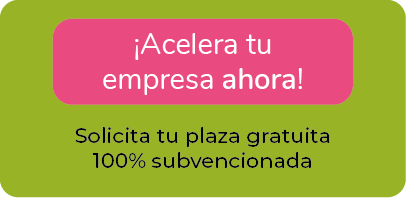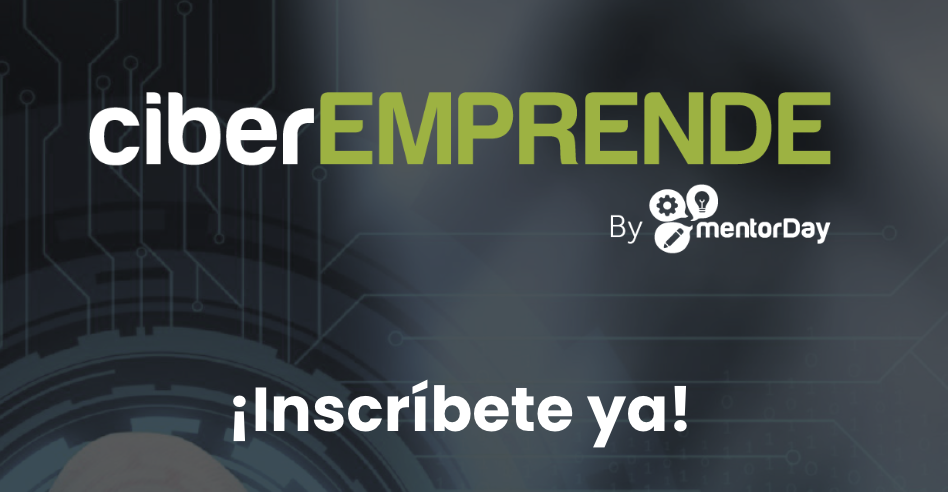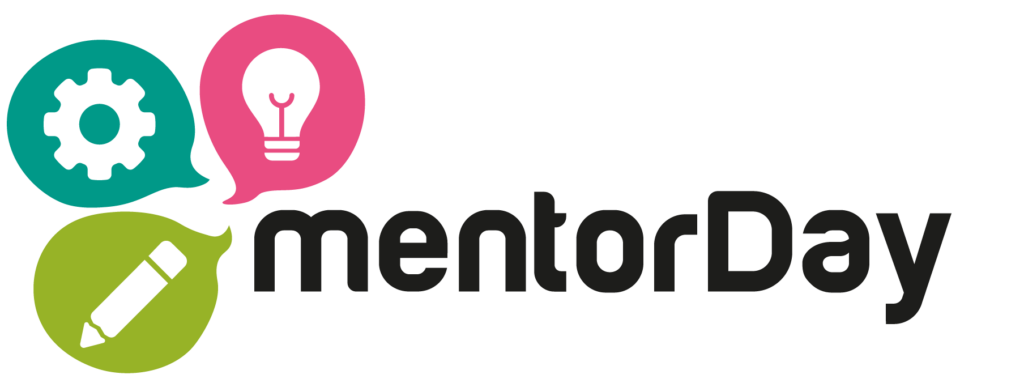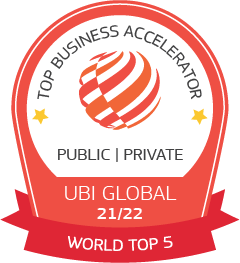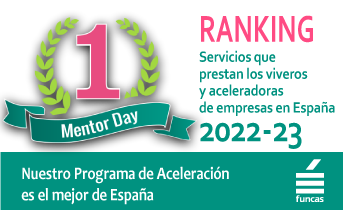Plan económico-financiero
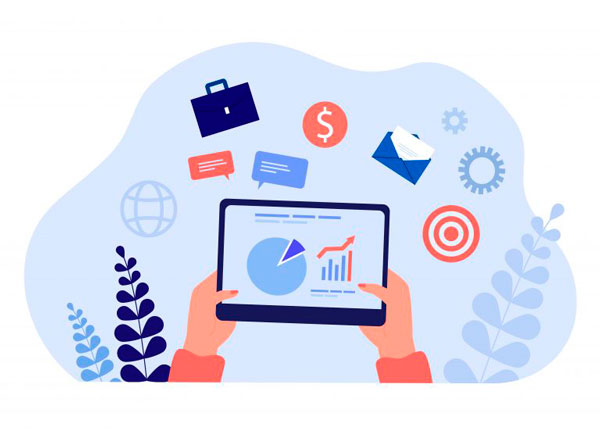
Acelera tu empresa con estos consejos de expertos que cuenta sobre «Plan económico-financiero». ¡Analiza y descubre esta TIP!
Trazar una hoja de ruta es sumamente complicado, aunque sí necesario para garantizar la supervivencia y expansión del proyecto empresarial. El actuar con improvisación, sin planificar, puede causar serios problemas de viabilidad, al estar más expuestos a tomar decisiones incorrectas.
Si en los diferentes planes de actuación, hemos reflejado las acciones que pretendemos llevar a cabo para que el camino que vamos a emprender sea factible, ahora llega el momento de cuantificar dichas acciones, de traducirlas a términos monetarios y medirlas. El objetivo es comprobar, si asumiendo un riesgo razonable, el proyecto empresarial puede seguir una senda de crecimiento rentable, sostenible y financieramente saneado.
Toca, por tanto, continuar haciendo números y verificar “si salen o no” para, en caso negativo, ver qué aspectos de esta hoja de ruta hay que replantear. Cuando hicimos el cálculo de los primeros números tesorería (+) estábamos en una fase de validación de hipótesis (+), por lo que era suficiente con obtener un resultado aproximado para decidir si seguíamos adelante con el modelo de negocio (+) diseñado, o no.
En la fase actual, pasamos de validar hipótesis a validar los planes de acción, y del resultado que obtengamos tomaremos la decisión más trascendental: ¿ponemos en marcha el proyecto? Esto conlleva que, a diferencia de cuando realizamos el cálculo del resultado de los primeros números —en el que para obtenerlo sólo tuvimos en cuenta dos tipos de elementos, costes e ingresos—, ahora debemos disponer de una información mayor y más rigurosa.
Por lo que, llegados aquí, además de tener en cuenta los elementos que tienen un significado meramente económico, ingresos y gastos, debemos complementar esta información con la que nos proporcionan los elementos que tienen un significado y función meramente financiera, cobros y pagos, así como con los elementos fruto de la combinación de las dos, inversión y financiación, que reflejan la situación patrimonial del proyecto.
Estos son los seis elementos clave que representan los números de cualquier proyecto empresarial, elementos que hay que tener en cuenta para analizar la viabilidad económica y financiera del mismo.
Ahora bien, para que el sentido del análisis de los mismos sea más eficaz, es conveniente agruparlos según su significado y función en los siguientes tres documentos o estados esenciales:
ESTADOS ESENCIALES
- El estado de tesorería (+), que refleja los movimientos de la misma, cobros y pagos, y como consecuencia el saldo de disponible.
- La cuenta de resultados que, como su nombre indica, refleja el resultado, pérdida o beneficio obtenido por la diferencia entre ingresos y costes.
- El balance de situación, que refleja las inversiones y su financiación y, por lo tanto, la mayor o menor garantía patrimonial que ofrece el proyecto.
El entender el significado de estos elementos y la estructura de estos estados nos ayudará a operar con los mismos y obtener una serie de métricas e indicadores que nos permitan tomar decisiones estratégicas de forma ágil, dando respuestas a cuestiones que se nos planteen a la hora de analizar la viabilidad económico-financiera y escalabilidad del proyecto.
Algunas de las métricas e indicadores que nos aportarán información determinante, desde el punto de vista económico-financiero y que, por tanto, debemos conocer, son los siguientes:
MÉTRICAS E INDICADORES
Los diferentes resultados, o márgenes, y el indicador de la escalabilidad (el ebitda).
- El CAC (+) y LTV.
- El disponible y el consumo de efectivo (burn rate).
- La rentabilidad, económica y financiera, y el break-even.
- El fondo de maniobra (working capital).
Para poder manejar los “números del proyecto”, se ha diseñado una hoja de cálculo más completa que la que se propuso para la elaboración de los “primeros números”. La finalidad es que, insertándolos correctamente, ésta elabore, automáticamente, los tres documentos esenciales.
A partir de estos documentos, podremos calcular las métricas e indicadores necesarios —como los mencionados arriba—, que nos sirvan de soporte para realizar el análisis económico-financiero de las proyecciones planteadas de manera rápida y eficaz. Esta herramienta se adjunta en documento anexo para su descarga aquí (+), y lleva por título “plan e-financiero EOI”.
El horizonte temporal que comprende el plan e-financiero EOI, es de dos años, y está diseñado para “volcar” en los cuadros correspondientes, las valoraciones monetarias de todas las acciones reflejadas en los otros planes de acción, tales como las del plan de marketing (+).
UTILIZANDO LA HERRAMIENTA PLAN E-FINANCIERO EOI, PODREMOS
CONOCER CUÁLES SON LOS INGRESOS DEL PROYECTO – PREVISIÓN DE VENTAS:
- ¿Qué vamos a vender? – productos, servicios, (hoja 1).
- ¿A qué precios vamos a vender? – precios de venta, (hoja 1).
- ¿Cuánto vamos a vender? – estimar número de clientes a facturar, (hoja 2), (hoja 9).
CONOCER CUÁNTO CUESTA CONSEGUIR DICHOS INGRESOS – PRESUPUESTO DE COSTES Y COMPRAS:
¿QUÉ COSTES VAMOS A SOPORTAR? – ESTRUCTURA DE COSTES
- Costes directos – relacionados con las compras y ventas, (hoja 3), (hoja 9).
- Costes de marketing on y off, CAC y LTV, (hoja 4), (hoja 9).
- Costes de personal, (hoja 5), (hoja 9).
- Resto de costes fijos o de estructura, (hoja 6), (hoja 9).
- Compras del período, (hoja 3).
DETERMINAR QUÉ INVERSIONES NECESITAMOS – PRESUPUESTO DE INVERSIONES:
¿DE CUÁLES DISPONEMOS? ¿CUÁLES HAY QUE ADQUIRIR?
- ¿Cómo es su estructura? – % en inmovilizado y en corriente, (hoja 7), (hoja 9), (hoja 10).
DETERMINAR CÓMO SE VAN A FINANCIAR DICHAS INVERSIONES – PRESUPUESTO DE FINANCIACIÓN:
¿CUÁNTO APORTAMOS? ¿CUÁNTO NOS ENDEUDAMOS?
- ¿Cómo es su estructura? – % en propia y en ajena – a devolver a corto y/o a largo plazo, (hoja 7), (hoja 9), (hoja 10).
CONOCER CUÁL ES EL PUNTO DE EQUILIBRIO O BREAK EVEN:
- ¿Cuánto hay que vender para cubrir costes?, (hoja 2), (hoja 10).
- ¿Hay mercado para alcanzarlo? ¿Cuándo se alcanza?, (hoja 6).
ANTICIPARNOS A LOS POSIBLES PROBLEMAS DE LIQUIDEZ, DETERMINANDO CUÁNDO SE PRODUCEN LAS NECESIDADES DE TESORERÍA – PLAN DE TESORERÍA
- ¿Cuándo vamos a cobrar las ventas? – plazos de cobro (% al contado, % de días de crédito concedido a clientes), (hoja 2).
- ¿Cómo vamos a cobrarlas? – % ventas como medio de cobro soporte digital, (hoja 2).
- ¿Cuándo vamos a pagar las compras, y/o costes directos? – plazos de pago (% al contado, % de días de crédito concedido por proveedores), (hoja 3).
- ¿Cuándo y cuánto dinero entra procedente de la financiación?, (hoja 8).
- ¿Cuándo y cuánto dinero sale para pagar las inversiones?, (hoja 8).
- ¿Cuánto y cómo se va “quemando” el dinero? – burn rate, (hoja 8).
- ¿Cómo se van a financiar los déficits de tesorería? – replantear la financiación, (hoja 8).
COMPARAR TESORERÍA VS RESULTADO – LIQUIDEZ VS RENTABILIDAD – INDICADORES
- Resultado (+), tesorería (+) = rentable y con liquidez. Viable.
- Resultado (+), tesorería (-) = rentable pero no va a sobrevivir, al no tener liquidez. No viable.
- Resultado (-), tesorería (+) = no rentable, pero puede sobrevivir, pues tiene suficiente liquidez. “Viable”, (hoja 6), (hoja 8), (hoja 9) y (hoja 10).
ANALIZAR MÁS INDICADORES ECONÓMICO-FINANCIEROS:
- Margen bruto sobre ventas, (hoja 9), (hoja 10).
- Ebitda, (hoja 9), (hoja 10).
- Endeudamiento, (hoja 10).
- Capacidad para devolver la deuda, (hoja 10).
- Rentabilidad económica y financiera, (hoja 10).
- Pay-back, (hoja 10).
CREAR VARIOS ESCENARIOS:
- La probabilidad de que se cumpla lo estimado puede que no sea muy alta, por lo que hay que tener preparado un plan de contingencias (“y si…”).
El número de hojas que se indican entre paréntesis hacen referencia a las comprendidas en la herramienta-hoja de cálculo “plan e-financiero EOI” que se adjunta como herramienta auxiliar y que se puede consultar y descargar aquí (ver+)
APLICA ESTE TIP EN TU PROYECTO
- 💻 PRACTICA con un experto en el próximo webinar práctico.
- 🔎 CONSULTA más TIPs relacionadas con este mismo tema.
- 📖 AMPLIA tus conocimientos descargando este EBOOK.
PIENSA EN TI
- 🚀 IMPULSA tu empresa en el próximo programa de aceleración, ¡reserva tu plaza ya!
- 🥁 PRACTICA con tu proyecto en este webinar práctico, ¡solicita tu plaza!
- 🌐 CONTACTA con otros emprendedores y empresas, ¡inscríbete y participa en el próximo Networking!
PIENSA EN AYUDAR A LOS DEMÁS
- 🤝COLABORA como voluntario: experto, mentor, inversor, premiando, difundiendo, retando, innovando, creando una TIP…
- 💬 RECOMIENDA este programa para que llegue a más emprendedores por Google.
- 👉 ¡COMPARTE tu aprendizaje!
- 📲 REENVÍA esta TIP 👇


